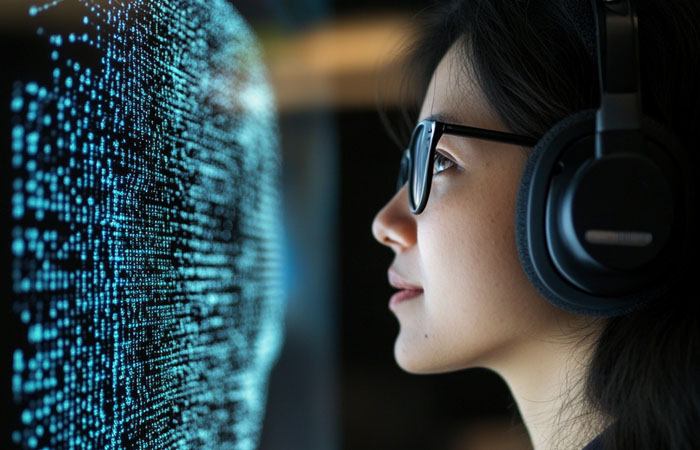In today’s world, a speech recognition neural assistant is becoming an indispensable tool for increasing productivity. Speech recognition technologies are rapidly developing, offering users new opportunities for interacting with devices and automating processes. In this article, we will look at how voice-to-text recognition is changing our daily lives and business environment.
History of speech recognition development
Speech recognition technologies have come a long way since the first experiments in the mid-20th century. Early systems could only recognize a limited number of words, but with the development of neural networks and artificial intelligence, the accuracy and speed of recognition have improved significantly. Today, online speech-to-text recognition is available to a wide range of users thanks to the development of cloud technologies and powerful sound processing algorithms.
How does a modern voice recognition system work?
Modern voice recognition systems use neural networks to analyze audio signals and convert them into text. The process includes several stages:
- Audio recording and pre-processing – removing noise and improving sound quality.
- Analysis and decoding – recognition of phonemes and words using trained models.
- Post-processing – correction of errors and bringing the text to the required format.
These stages ensure high recognition accuracy, allowing the technology to be used in various areas, from personal use to corporate solutions.
Basic functions and capabilities of modern systems
Modern voice recognition systems offer a wide range of functions:
- Multilingualism – support for different languages and dialects.
- Integration with other services – connection to cloud storage, CRM systems and other tools.
- Customization – training the system based on individual voice characteristics.
- Real time – convert speech to text instantly while you talk.
- Support for various audio formats – work with different types of audio files.
How to Implement Voice Recognition into Your Workflow
The implementation of speech-to-text recognition into the workflow can be divided into several stages:
- Determining needs – identifying tasks that can be automated.
- Choosing the right solution is an assessment of the available tools and their capabilities.
- Integration with existing systems – setting up interaction with other applications.
- Staff training – training employees to work with new tools.
- Monitoring and optimization – continuous monitoring of performance and making improvements.
Real cases of successful use of speech recognition technologies
Many companies have already successfully integrated voice recognition into text:
- Customer support services use systems to respond to inquiries quickly.
- Journalistic agencies transform interviews into text materials.
- Healthcare facilities are automating the creation of medical records.
- Educational institutions are using technology to create lecture transcriptions.
These examples demonstrate how speech recognition can improve efficiency and reduce costs.
Tips for optimizing your voice recognition experience
To maximize the effectiveness of voice recognition technologies, it is recommended:
- Use high-quality equipment – microphones and devices with good sound recording.
- Train the system on your own voice – improves recognition accuracy.
- Minimize background noise – improves the quality of audio recordings.
- Update your software regularly to include the latest improvements and fixes.
- Check and correct results – ensures the accuracy of the converted text.
Security and privacy of data when using voice recognition
Technical support
When using speech recognition technologies, it is important to consider data security and privacy:
- Data encryption – protection of audio recordings and text data from unauthorized access.
- Privacy policy – clear rules for processing and storing data.
- Access control – restricting access to data only for authorized users.
- Compliance – meets GDPR and other data protection regulations.
The Future of Voice Recognition: New Trends and Developments
The future of speech recognition technology promises many innovations:
- Improving accuracy – further reducing recognition errors.
- Deep learning is the use of more complex neural networks to process speech.
- Multilingualism – expanded support for languages and dialects.
- Contextual understanding is a more accurate understanding of the meaning and context of speech.
- AI Integration – Combining speech recognition with other artificial intelligence to create more intelligent systems.
These trends make speech recognition an even more powerful tool for a variety of industries.
Mistakes to Avoid When Using Speech Recognition
To successfully use voice recognition technologies, it is important to avoid the following mistakes:
- Ignoring audio quality – poor recording quality reduces accuracy.
- Insufficient system tuning – lack of training on specific voices and conditions.
- Neglect of data privacy may lead to information leakage.
- System overload is the use of too much data in a short period of time.
- Lack of verification of results – it is necessary to regularly check and correct the recognized text.
Avoiding these mistakes will help you get the most out of speech-to-text recognition technologies.
How Voice Recognition Is Changing Our Productivity
Voice-to-text recognition technologies open a new era of productivity, allowing you to automate many processes and increase efficiency in both everyday life and business. Integrating a neural assistant for speech recognition helps save time, reduce errors and improve the quality of work. Order a neural assistant from us today and discover all the benefits of modern speech recognition technologies. Start converting your voice into text quickly and easily!
